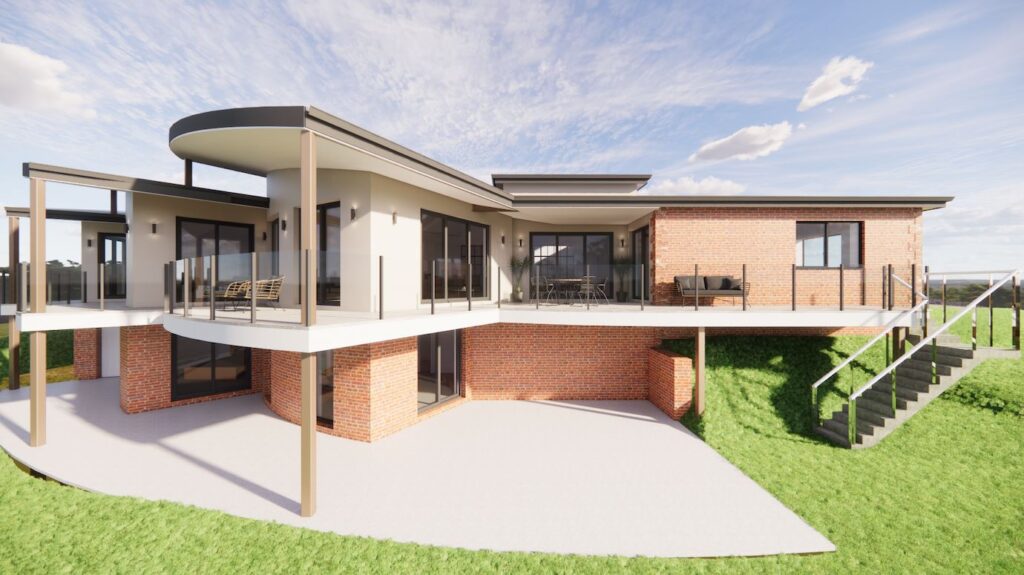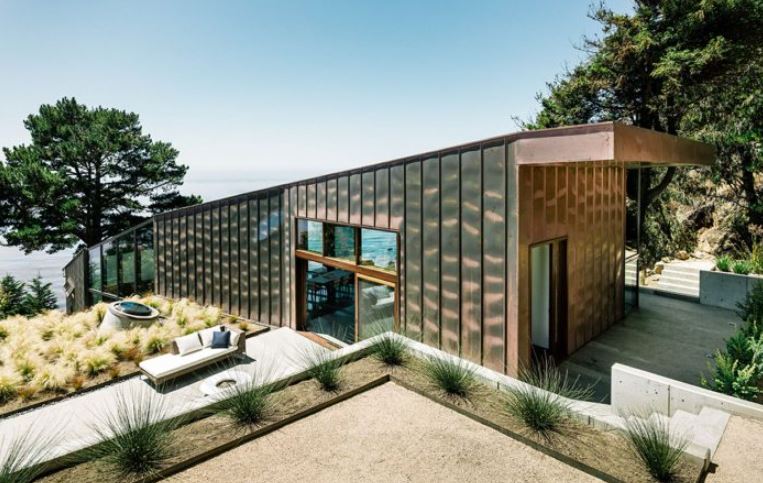In a world growing increasingly conscious of the environmental footprints we leave behind, the art of eco-home architecture emerges as a shining beacon of possibility for sustainability. But what exactly constitutes sustainable architecture? At its core, it encapsulates designs and structures that work harmoniously with the environment, minimising negative impacts and optimising energy efficiency. The significance of eco home builders cannot be understated, particularly in an era where climate change and resource depletion are pressing concerns. This burgeoning trend of sustainable living marries innovation with responsibility, providing a blueprint for the future where our homes are not just shelters but active participants in environmental conservation.
Eco home architecture reflects a shift in collective mindset, a transition from the conventional to the conscious, where every brick laid and every design drawn is a step towards a greener future. This blog post will explore the principles, techniques, and real-world applications of sustainable home design, delving into the artistry and science that make up the fabric of this architectural revolution. We will navigate through the intricate tapestry of energy efficiency, water conservation, sustainable materials, and biophilic design, uncovering the myriad ways in which they contribute to creating homes that are as ecologically responsible as they are aesthetically pleasing. Join us on this journey into sustainable home architecture, where design meets sustainability, and discover how you can be a part of this transformative movement.

Principles of Sustainable Home Design
Energy Efficiency
Understanding and implementing energy efficiency sits at the core of sustainable home design. Adopting renewable energy sources such as solar, wind, and geothermal energy is instrumental in reducing reliance on fossil fuels, mitigating greenhouse gas emissions, and reducing a home’s carbon footprint. Solar panels, wind turbines, and geothermal pumps are not just symbols of modernity but essential elements driving the shift towards a sustainable future.
Complementing these are energy-efficient appliances and systems designed to consume less energy without compromising performance. HVAC systems, lighting, and household appliances now have energy ratings indicating their efficiency, empowering homeowners to make informed decisions and reduce energy consumption. The amalgamation of renewable energy sources and energy-efficient systems creates a harmonious blend, reflecting the essence of energy efficiency in eco-home architecture.
Water Conservation
The importance of water conservation in sustainable home design cannot be overstated. Implementing systems like rainwater harvesting enables homeowners to collect and utilise rainwater for various non-potable needs, reducing reliance on municipal water supply and ensuring resource conservation. This collected water can find use in gardens, flushing toilets, and, after purification, even as drinking water.
Another significant aspect is greywater recycling, which involves treating and reusing water from sinks, showers, and washing machines for irrigation and flushing toilets. Greywater systems significantly reduce water waste, promoting a circular water use system within the home and contributing to a holistic approach to water conservation.
Sustainable Materials
Sustainable materials play a pivotal role in eco-home architecture. Using reclaimed or recycled materials such as wood, metal, and glass reduces the demand for new resources, thereby minimising environmental degradation and energy consumption associated with material production. Often rich with history and character, these materials add a unique home aesthetic while ensuring sustainability.
Locally sourced materials further contribute to sustainability by reducing transportation emissions and promoting local economies. Materials such as bamboo, adobe, and rammed earth are eco-friendly and adapt to the local climate and landscape, enhancing the home’s ecological compatibility.
Biophilic Design
Biophilic design embodies the principle of incorporating nature into home design. This approach fosters a connection between inhabitants and the natural world, using natural light, plant life, and organic materials. Biophilic design is not just aesthetically pleasing but also contributes significantly to the well-being of the occupants, enhancing mood, reducing stress, and improving air quality.
Innovative Sustainable Design Techniques
Passive Solar Design
Passive solar design is a cornerstone in sustainable home architecture, leveraging the sun’s energy for heating and cooling. The orientation and layout of the home are critical, with optimal placement of windows, walls, and floors to collect, store, and distribute solar energy. This design strategy reduces the need for auxiliary heating, contributing to energy efficiency.
Thermal mass and insulation are integral components of passive solar design. Materials with high thermal mass, such as concrete and brick, store and release solar energy, regulating indoor temperatures. Adequate insulation further ensures that the collected energy is not lost, making the home energy-efficient and comfortable.
Green Roofs and Walls
Green roofs and walls are innovative design elements that bring many benefits. They act as insulators, reducing energy consumption, mitigating the heat island effect, and providing habitats for wildlife. Green roofs can also manage stormwater runoff, thereby contributing to water conservation.
Various types of green roofs and walls can be implemented, ranging from extensive green roofs, which are low-maintenance and lightweight, to intensive green roofs, which can support various plants but require more maintenance. Implementing these green features depends on the specific needs and constraints of the project, but their benefits make them a valuable addition to sustainable home design.
Natural Ventilation
Natural ventilation is fundamental in creating homes that breathe. It involves designing for optimal airflow, using windows, vents, and openings strategically placed to remove stale air and draw in fresh air. This not only reduces energy consumption associated with mechanical ventilation but also improves indoor air quality and the well-being of the inhabitants.
The advantages of natural ventilation are manifold. It reduces reliance on air conditioning, saving energy, and creates a healthier living environment by reducing indoor pollutants and providing fresh air. This design technique exemplifies how innovative strategies can lead to homes that are not only sustainable but also nurturing and harmonious.
Challenges and Solutions in Sustainable Home Design
Balancing Aesthetics and Sustainability
One of the challenges architects face in sustainable home design is striking the right balance between aesthetics and sustainability. While green solutions are integral, aligning them with visually appealing designs can sometimes be intricate. However, the solution lies in the innovation and creativity of designers to integrate sustainable elements seamlessly, ensuring homes are both beautiful and eco-friendly.
Navigating Building Codes and Regulations
Adhering to building codes and regulations while optimising for sustainability can pose challenges. Diverse local and international standards dictate the construction practices, and aligning these with green initiatives necessitates a thorough understanding and careful planning. Solutions involve:
- Active engagement with regulatory bodies.
- Advocating for green amendments.
- Staying abreast of the evolving landscape of construction regulations.
Cost and Accessibility of Sustainable Materials
While sustainable materials are key to eco-home architecture, issues of cost and accessibility can be barriers. However, as the demand for eco-friendly materials increases, the market adapts, offering more affordable and accessible options. Additionally, considering the lifecycle cost, including maintenance and energy savings, can highlight the cost-effectiveness of sustainable materials in the long run.
Solutions and Compromises for Common Challenges
Addressing challenges in sustainable home design involves both solutions and compromises. Leveraging technology, fostering collaborations, advocating for policy changes, and educating consumers can alleviate common hurdles. Compromises might involve balancing ideal sustainable practices with practicality and affordability to maximise sustainability within constraints.

Future Trends in Eco Home Architecture
Smart Homes and Sustainability
The advent of smart homes is a promising trend in eco-home architecture. Integrating intelligent lighting, heating, and appliance systems can significantly enhance energy efficiency and convenience. These connected homes adapt to the inhabitants’ needs and promote responsible energy consumption, paving the way for a harmonious coexistence between technology and sustainability.
The Role of 3D Printing in Home Construction
3D printing is emerging as a transformative technology in home construction. It offers the potential to reduce waste, decrease construction time, and utilize sustainable materials, thereby contributing to the eco-friendliness of homes. The precision and customization afforded by 3D printing enable architects to explore novel designs and solutions, pushing the boundaries of sustainable home architecture.
Evolving Consumer Expectations and Demands
Consumer expectations and demands are evolving towards sustainability. A growing awareness of environmental issues and a desire for responsible living drive demand for sustainable homes. This shift in consumer mindset encourages architects and builders to innovate and offer eco-friendly solutions, fostering a market that values and promotes sustainability.
Advancements in Renewable Energy Technologies
Continuous advancements in renewable energy technologies enhance the feasibility and attractiveness of sustainable home design. Innovations in solar, wind, and geothermal energy are making them more efficient, affordable, and adaptable to various architectural designs, facilitating their integration into homes and contributing to a greener future.
Sustainable home design holds profound implications for the environment. Eco homes substantially reduce their environmental footprint by optimising energy efficiency, conserving water, utilising sustainable materials, and incorporating innovative design techniques. These homes are a testament to the harmony between human habitation and nature, underscoring the potential for responsible living.
Architects and designers play a crucial role in shaping the landscape of sustainable living. Their creativity, innovation, and commitment to green principles are instrumental in developing aesthetically pleasing and ecologically responsible homes. By championing sustainability, they meet consumers’ evolving demands and contribute to environmental conservation and awareness.
The journey towards sustainability is ongoing, with much ground to cover. Encouraging more sustainable practices in home building is essential, calling for the collective effort of architects, builders, regulators, and homeowners. Through education, advocacy, and a shared commitment to a sustainable future, we can continue to forge a path where homes are sanctuaries for both people and the planet.

Leave a Reply